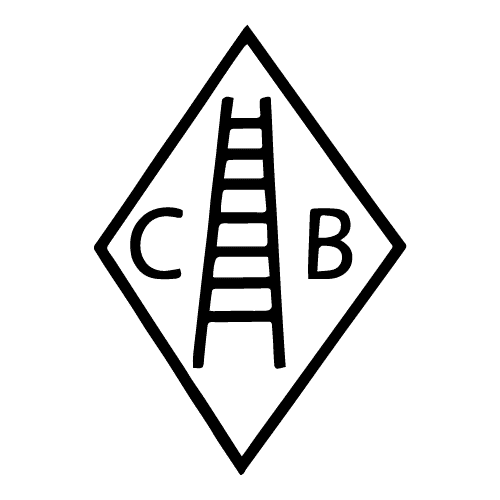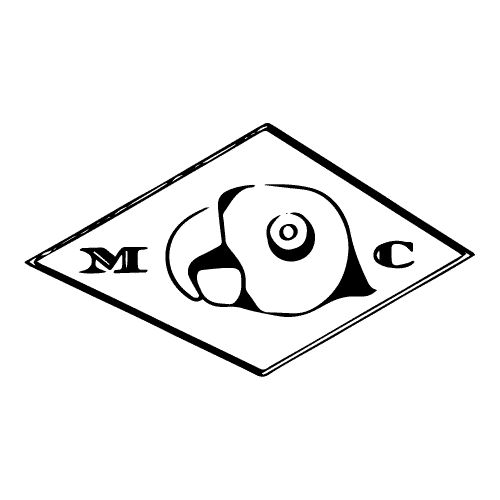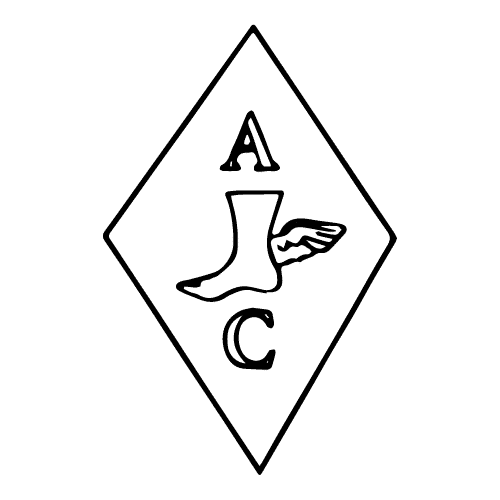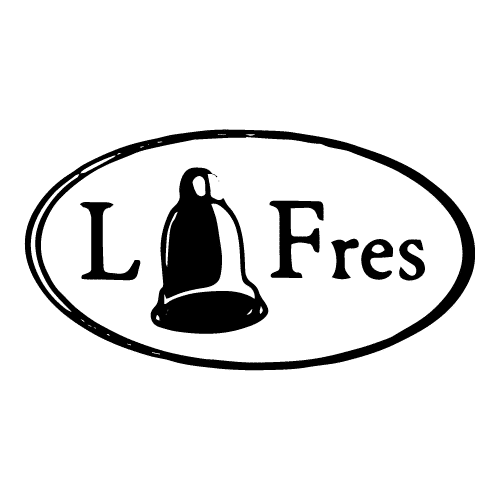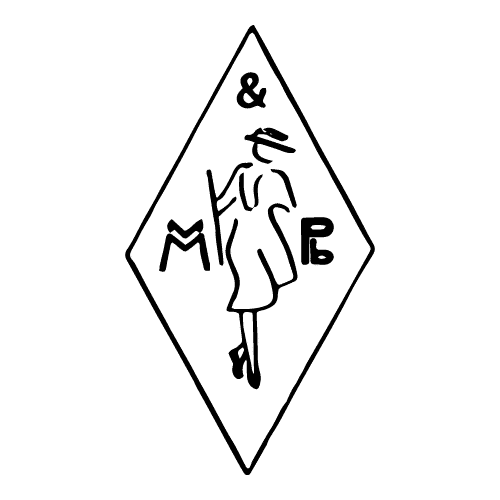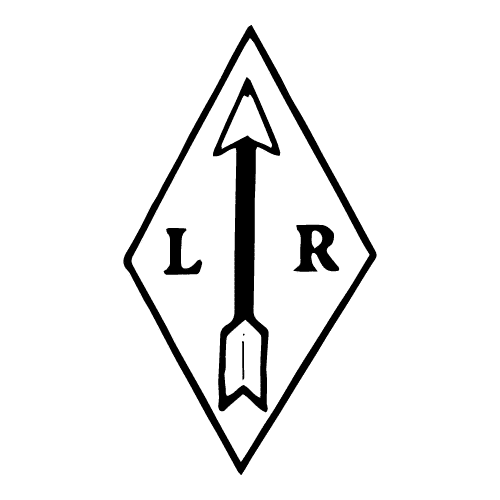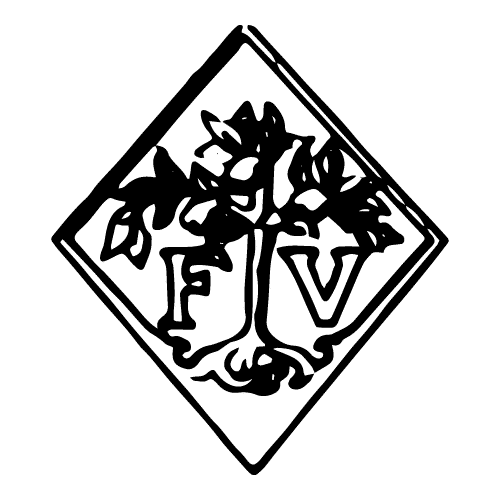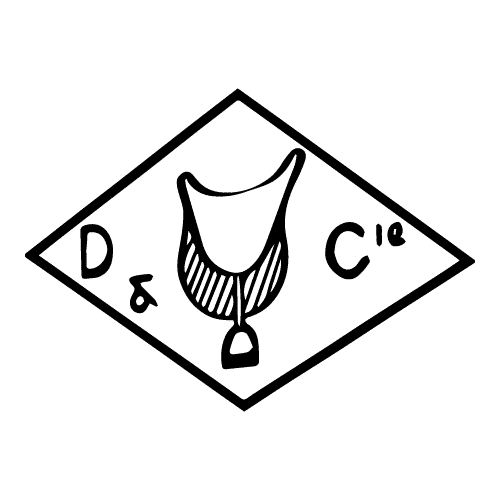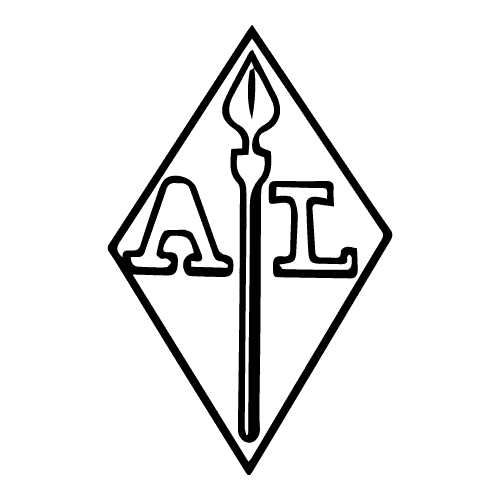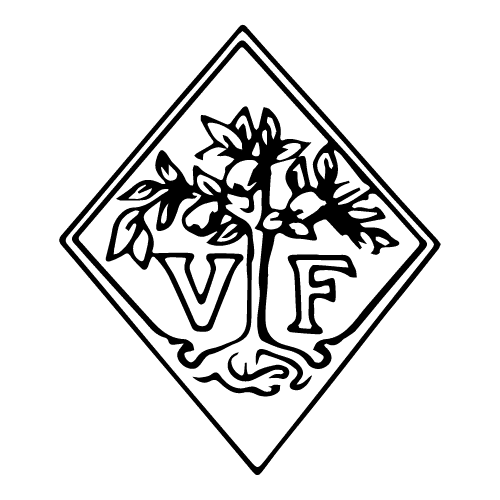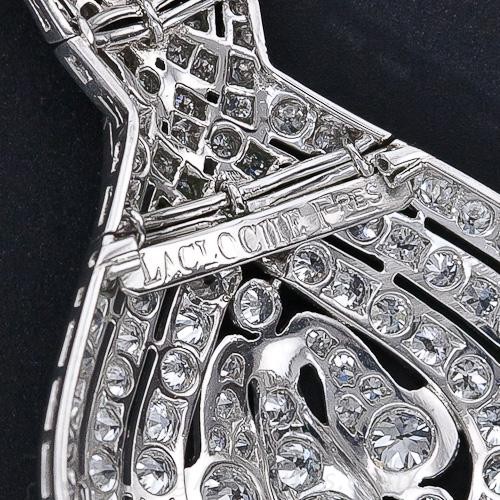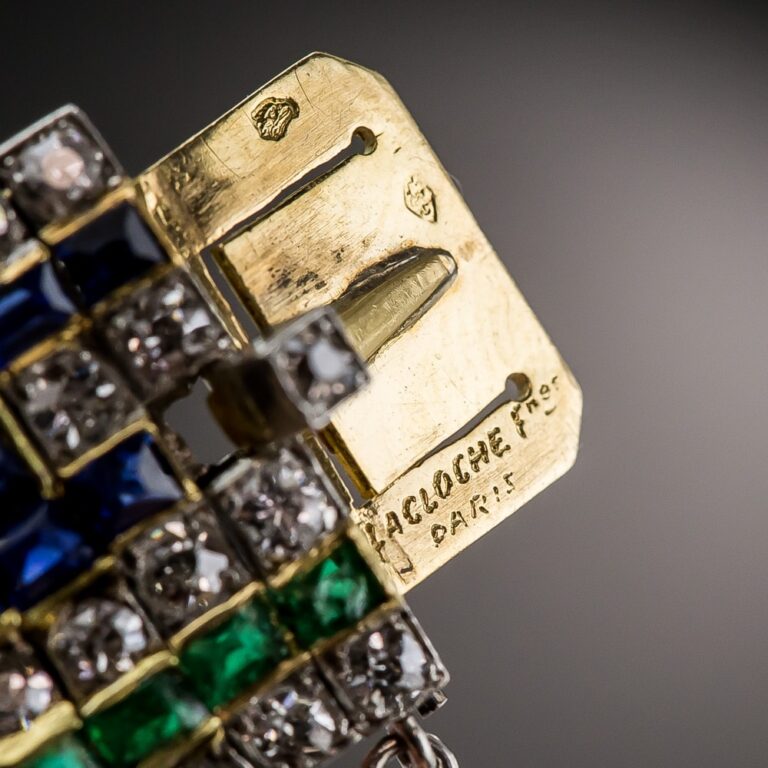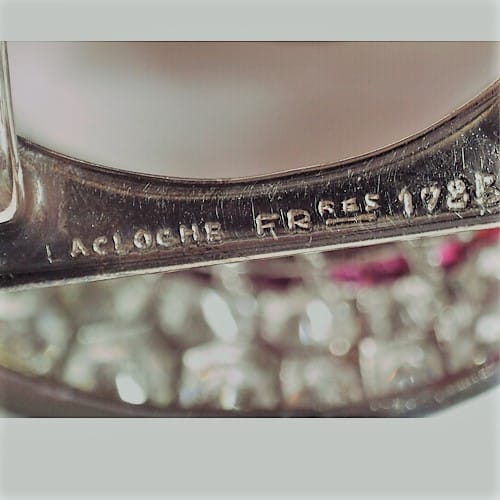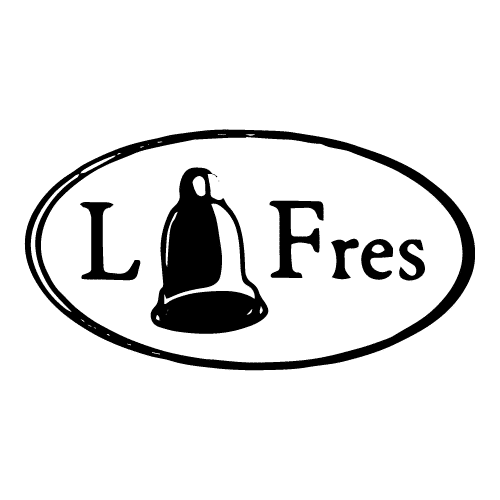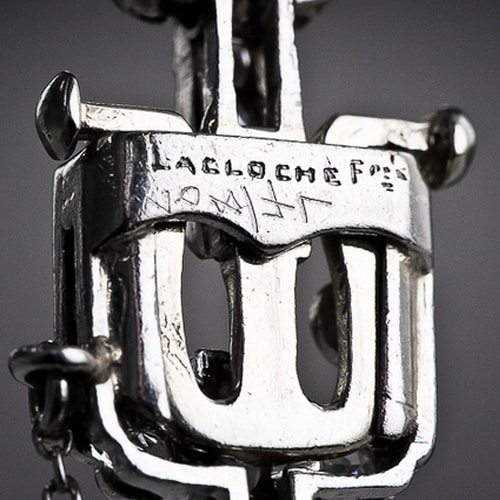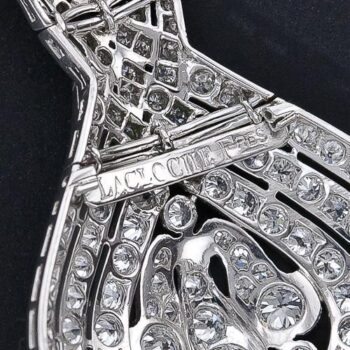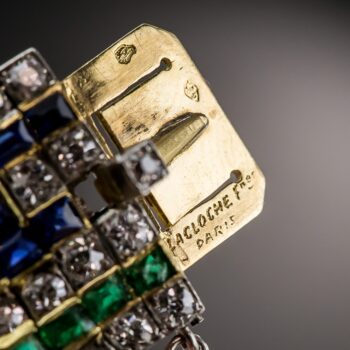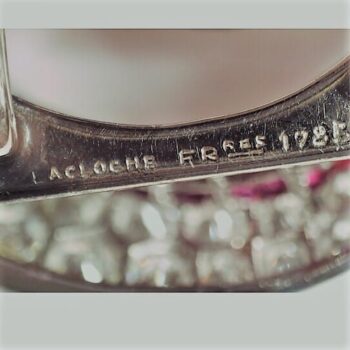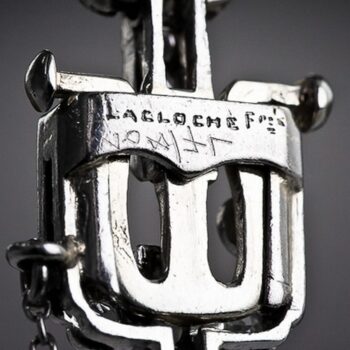The Firm(s)
Exploring the history of the jewelry firm owned by the Lacloche family, attempts are made to contain the company within one entity – Lacloche Frères. In fact, there were several companies in which the Lacloches had involvement and many locations where there were branches of these entities. The patriarch, Hendricks Lacloche, and his wife raised a family comprised of six children, four boys and two girls all of whom were destined to enter the jewelry trade in one way or another. Circa 1892, two of the brothers, Jules and Léopold, headed for Paris and opened Lacloche Frères while Jacques and Fernand set sail for the New World seeking fame and fortune. Upon their return to Europe, Jacques and Fernand opened a new entity, Lacloche et Cie, in Madrid selling jewelry created in Paris and quickly developed a loyal following among the Spanish aristocracy. Soon, the Lacloche brothers are bedecking the crowned heads of Europe in some of the finest jewels of the day. Among their clientele are Queen Alexandra, His Majesty George I, King of Greece, Napoleon III and empress Eugénie, and Alfonso XII of Spain, his mother and his wife to name a few.
Cleverly “following the money” Lacloche et Cie opened shops in the French seaside playground of the rich and famous – Biarritz and another in the upscale resort area known as San Sebastian, Spain. Bertha Lacloche marries Jacob Jacques Walewyk and Walewyk-Lacloche shops specializing in bridal baskets and hosiery appear alongside Lacloche & Cie in these seaside enclaves. Meanwhile, Léopold and Jules collaborate with Louis Gompers (Lacloche-Gompers) in a shop on the rue de l’Opéra in Paris later moving it to the prestigious Place Vendôme. Following suit with their brothers, they also establish shops in the thermal spa town of Aix-les-Bains, the Principality of Monaco, the French Riviera town of Nice, the seaside town of Trouville, and Ostend Belgium, again by the sea. They have seemingly covered all of the desirable destinations for the well-heeled at the fin de siècle.
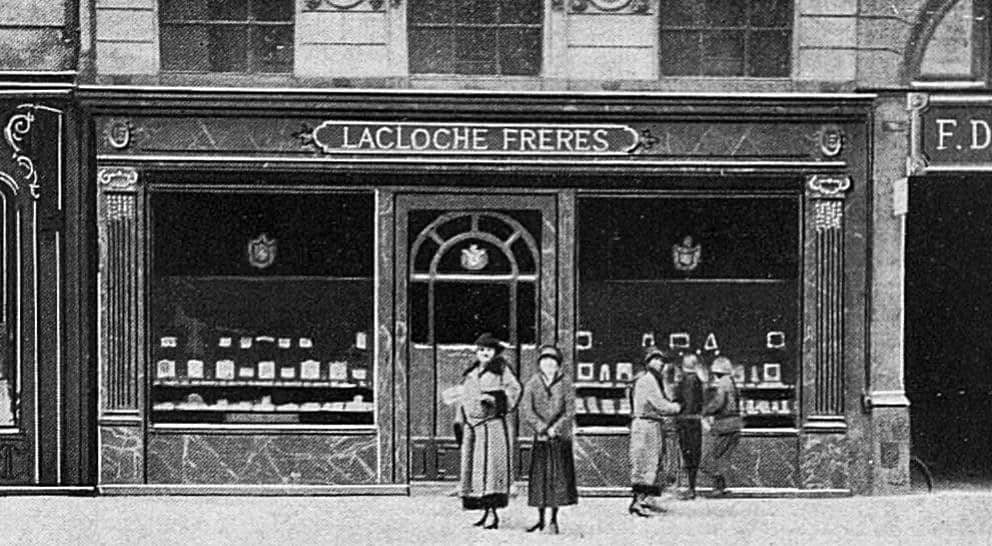
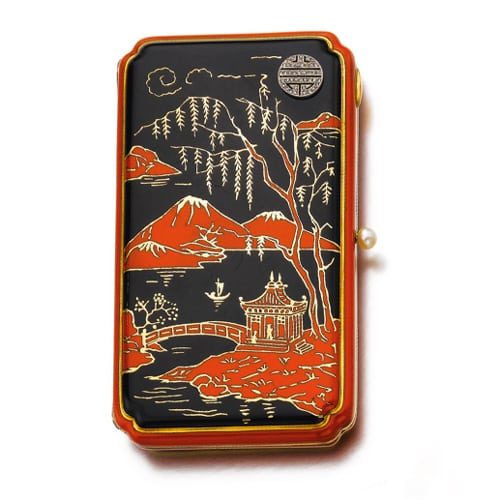
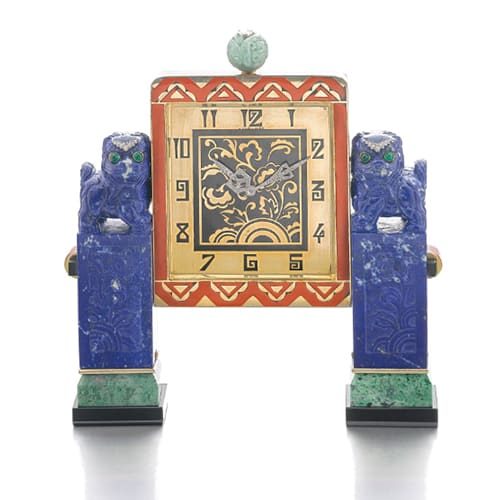
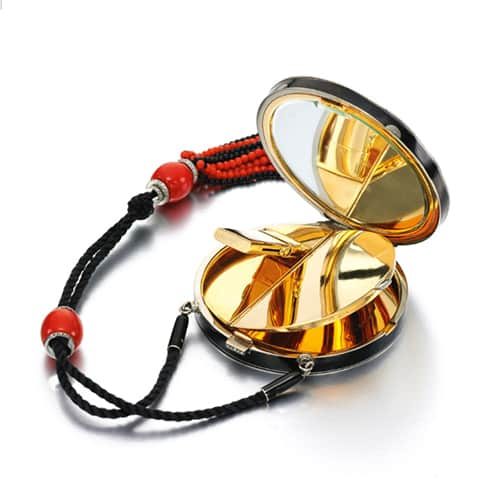
In 1919 Jacques Jr. joins the firm first in Paris and then later moves to London to run the branch. A few years later, Fernand’s Sons, Henri and Jacques (another Jacques), open an office on Fifth Avenue in New York City. From their Fifth Avenue office, they were able to make inroads into Hollywood and were soon draping the movie queens in their fabulous creations. Continuing to stay abreast of the activities of the rich, Lacloche Frères opens in Deauville for the summer season in 1923 and several more years to come. The following year Cannes gets a prestigious branch of the firm.
Eventually, Fernand is the last of the Lacloche brothers, Leopold is dead and Fernand purchases Jules remaining shares. His sons, Henri and Jacques, while working for the company, were enjoying the high life. They were all serious gamblers and by 1930 had accumulated so much debt it caused the business to fail. As all good things must come to an end so too did Lacloche Frères in 1931. Fernand died shortly thereafter.
Down but not out – nephew Jacques Lacloche (son of the original Jacques and decidedly not a gambler) opens an eponymous business in 1933 and mysteriously Lacloche Frères reappears in London with jewelry supplied by Jacques. Just coming of age as the business was failing was a lucky break for the family as he was able to re-establish the company’s reputation. He ingratiated himself in upper-crust social circles in Cannes becoming the Motor Yacht Club official jeweler. He, along with Ravinet d’Enfert, created the medals, cups and trinkets used by the club as awards for the Quinzaine motonautique competitions. Befriending the rich, famous, and aristocratic, Jacques was welcome at all their haunts, and was even invited to the wedding of Grace Kelly to the Prince of Monaco, creating several jewelry items for the occasion.
Jacques’s business thrived and his designs displayed at the 1937 Exposition Internationale des arts et techniques are lauded. Soon he has locations in Place Vendôme and in Cannes. Jacques continues to cultivate the rich and famous, winning awards at international expositions. Circa 1967, after exploring other art forms with exhibitions at the Place Vendôme location, Jacques leaves the jewelry business and the shop closes. The Cannes location is renamed Galerie J. Lacloche Édition and features other jewelry artisans as well as Lacloche jewelry. In 1999 Jacques Lacloche dies.
The Jewelry
Art Nouveau
Léopold and Jules were completely enamored by the Art Nouveau aesthetic and this was the first style embraced by the brothers. Wisely employing goldsmith Paul Frey to create figural beasts to adorn an array of assessoires – cigarette cases, compacts, purses, etc. these items were a resounding success.
Réne Lalique was another jeweler providing his design work to an array of jewelers of the time including Aucoc, Boucheron, Cartier, Vever, and Lacloche. Enameled gold birds of every type along with dragonflies adorned the showcases of Lacloche. Soon, however, the platinum revolution found the Lacloche brothers and their designs turned to those more ethereal and delicate forms. They were soon renowned for the “plaque” – a pearl, diamond, and enamel piece, dangling from a chain or pinned on as a brooch, it became a mainstay of their business.
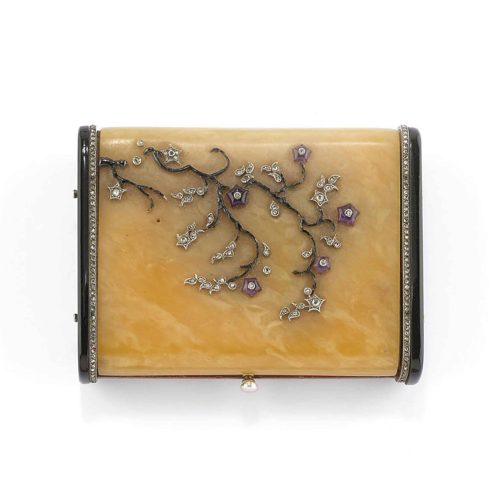
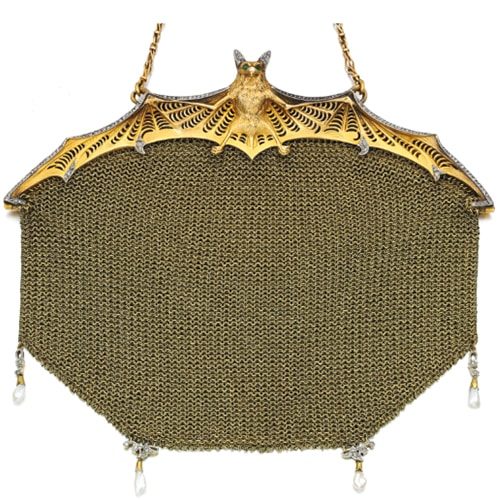
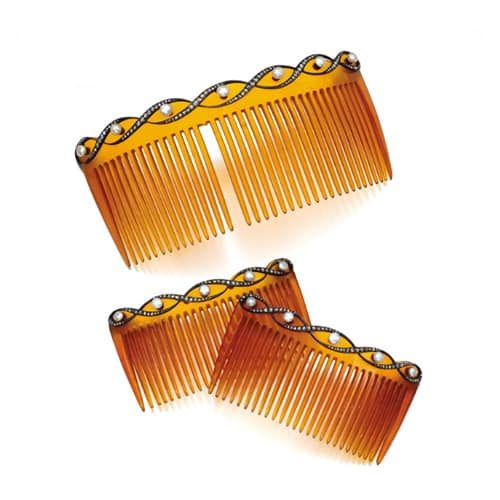
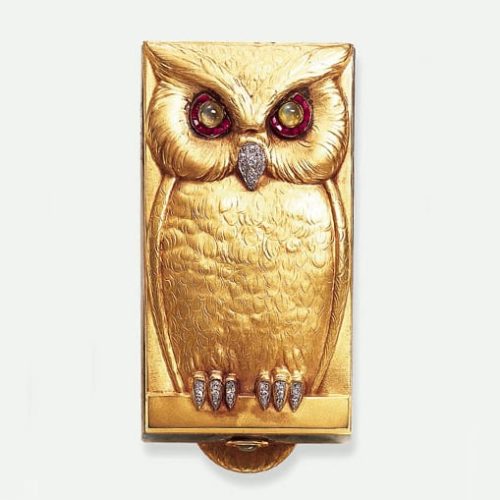
Belle Époque
The Belle Époque was a period where Lacloche Frères captured the emerging market for lady’s watches. Enameled in dusty hues of blue, green, and mauve and framed in delicate diamond and colored stone enclosures they were often suspended from a delicate chain or pinned on as a brooch. Bringing Lacloche together with the Verger firm, a watchmaker, and sometimes a case artist, these creations were unlike any seen before. Paul Brandt and Fernand Paillet were two of the case artists who created creatures, scenes, and other decorative effects in an Eighteenth-Century style for the reverse of these Belle Époque beauties. Notably, Paillet was a painter who plied his trade at the Manufacture Nationale des Sevres and was also acclaimed for his portraits of women created exclusively for Peter Marie, a wealthy eccentric.
With wealthy clientele from around the globe, all with diverse and eclectic tastes, Lacloche stocked their locations with a variety of styles of jewelry, not just what was currently in vogue in Paris. An example of a unique style embraced by Lacloche Freres was that of “jewelry embroidery” or “petit point”. Not exactly a new style, early attempts can be seen by Oscar Massin in 1878 and Cartier circa 1912, but one that flourished under the Lacloche firm. This style combining tapestry or needlework techniques rendered in metal gained new heights with the advent of the use of platinum allowing Lacloche to create increasingly delicate and realistic floral motifs. In Russia, the style can be seen in the Fabergé workshop through designer Alma Pihl with her work on the Mosaic Egg and other designs. Lacloche used this lacy style to enhance all manner of jewelry and accessories into the Art Deco Era.
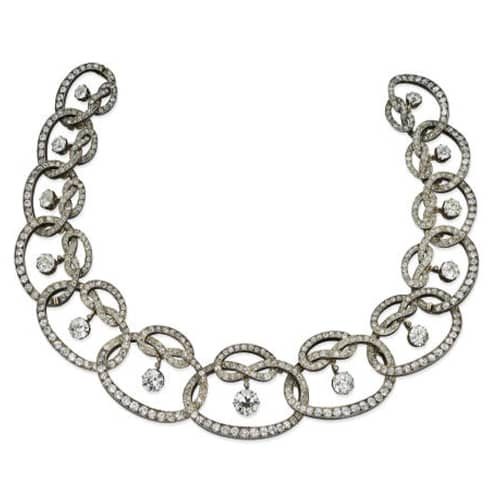
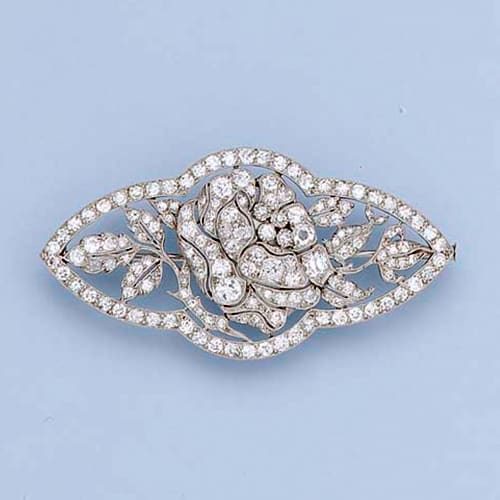
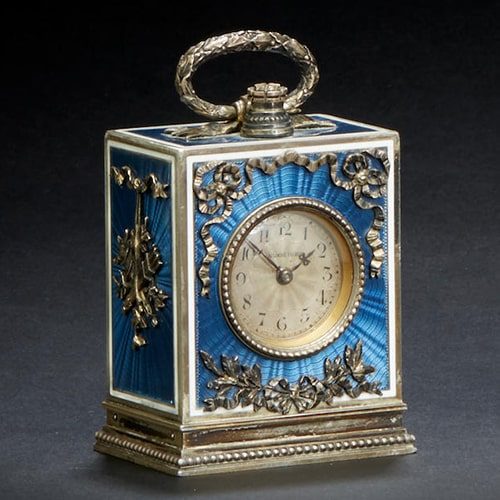
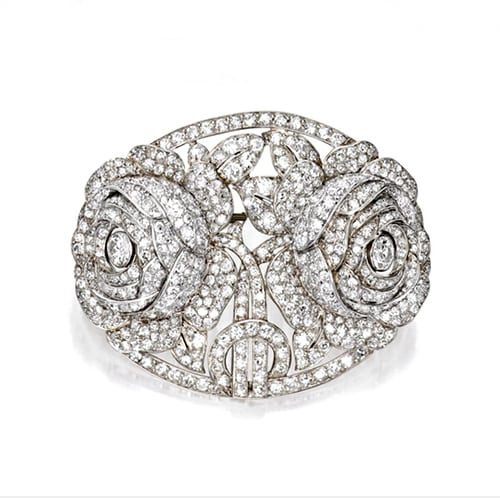
Art Deco
Japonisme was sweeping Europe by storm and the Lacloche firm was not immune to the appeal. Bright hues heretofore not usually used together were given “permission” to mingle by the costumers and set designers of Scheherazade and a new jewelry palette was created. Bold designs carpeted in colored gems, inlaid with incredible precision or enameled in vivid color with an Eastern flavor appeared during the “interwar” period.
Egyptomania, which began during the building of the Suez Canal, reached its apex in 1922 with the discovery of the tomb of Tutankhamun. As a design aesthetic, its motifs are immediately recognizable and the desire for all things Egyptian was strong. Lacloche designs of this era featured sphinxes, pharaohs, Anubis (the dog), Hieroglyphs, and Egyptian flora and fauna motifs. Truly, all things exotic (meaning Eastern) were the subject of all areas of fashion, travel, art, and entertainment.
During this period, jade emerged as a popular gem both for its rich (mostly green) color and the ability to carve it into infinite designs and forms. Lacloche used jade alongside diamonds to create scintillating contrast in bracelets, brooches, sautoirs.
Wearing make-up was an interesting outcome of World War I. When the men all left for war, women felt freed to indulge in these previously forbidden enhancements. Following the war, they continued to use the new products to enhance their feminine beauty while wearing short “manly” hairstyles and the loose-fitting garments of the roaring 20s. In order to manage these essential beauty confections, specialized boxes and compacts were created, and Lacloche once again excelled in the design of these items. An article in La Renaissance de l’art on Lacloche Frères stated:
“The skill of this crafter of boxes must be admired, as well as his sense of precision, knowing how to use a tiny space to fit an compartment or two to hold powder, a slim case – refillable – for lipstick, a mirror…” 1
A good many of these “boxes” were decorated by elaborate enamel scenes and encrusted or inlaid with a myriad of gems both precious and semiprecious. Craftsmen such as Alfred Langlois and Vladimir Makovsky created these gems for Ostertag, Van Cleef & Arpels, Cartier, Marchak, Lacloche, and others. Somehow, Lacloche managed to maintain a unique and diverse collection of designs with unusual shapes, combinations of function, and a richly hued palette despite the sharing of workshops among the premier jewelry houses.
Another innovation that came to the fore in the aftermath of WWI, lacquered jewelry. Indochinese lacquer workers imported during the war to lacquer propeller blades were unemployed, using all their talents they were able to “make lemonade” by retooling to apply their skills to jewelry, necessaries, cigarette boxes, and other precious metal boxes and bobbles. Many of these items sport Asian designs, landscapes, and Chinese motifs and symbols.
With the unencumbered dresses of the roaring ’20s, sautoirs attained amazing length, contributing to the geometry of the era by bisecting these dresses vertically. Some were so long they actually flowed down the back as well as the front. Paired with the extremely long earrings of the era every movement gleamed and glittered drawing attention to the wearer. Lacloche was noted for sautoirs composed of lengthy diamond-encrusted chains terminating in a magnificent colored stone, often with a fringe of diamonds to add further movement to the piece. Beads and pearls in various combinations also hung to new lengths… twirling these spectacular necklaces became a popular affectation.
The advent of platinum in jewelry along with enhanced diamond cutting techniques whereby the baguette-cut became available to designers, allowed Lacloche to excel at creating articulated masterpieces. The sleeveless fashion left the arms bare and ready for adornment. Women would pile strappy diamond bracelets in rows up their arms with designs growing ever wider in order to adorn more precious real estate. Cuff bracelets were popular as well for their wider, more dramatic coverage.
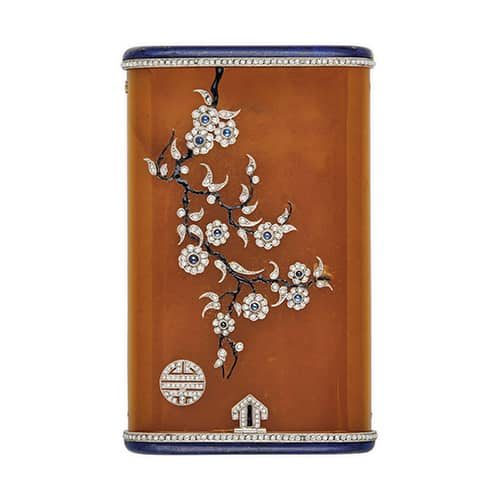
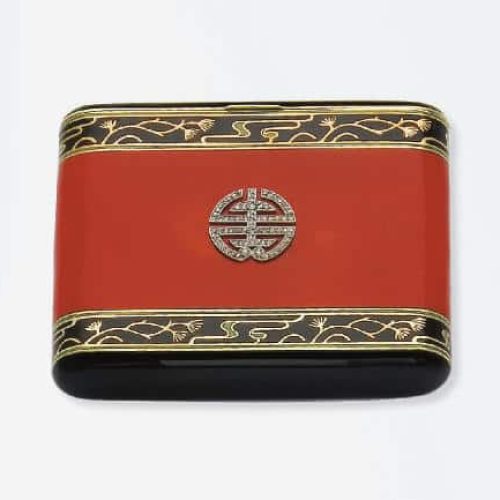
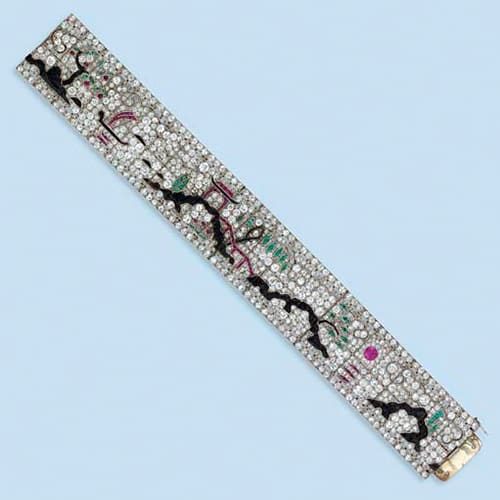
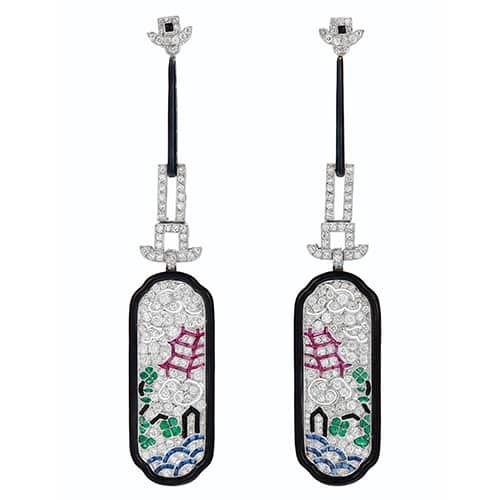
Art Moderne
Vanity Boxes retained their usefulness, indeed women used them to focus attention on themselves, using the mirror, displaying the box on the table, lighting a cigarette, etc. The designs employed in their creation became more geometric, bolder, and less fussy. The clip-brooch became a mainstay because of its versatility – worn on the lapel, as a hair ornament, on a hat, separated into two brooches to adorn both sides of a neckline, with infinite possibilities. Jacques Lacloche presented a sportier daytime bracelet with removable colored stones so that the owner could change them to suit her mood or the color of her shoes.
A return to natural themes in the 1930s was interpreted by Jacques Lacloche in a more stylized manner with somewhat stylized floral and fauna motifs rendered in diamonds and colored gems. Charm bracelets were so popular that Jacques Lacloche kept several workshops busy with his novelty charms. Figural Brooches called “Madelon” brooches were another novelty and equally popular rendered in yellow gold and enhanced by gems and enamel. Perhaps Jacques Lacloche’s most renowned brooch design, Four Seasons, featured stylized women dressed for winter, spring, summer, or fall. Textile-inspired gold jewelry twisted, braided, woven, and festooned, the trend for these designs reigned for 20 years.
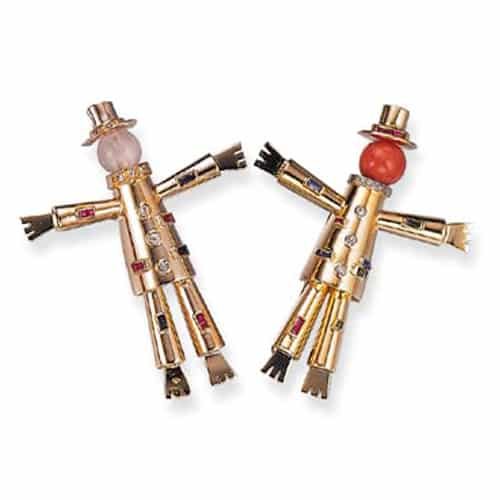
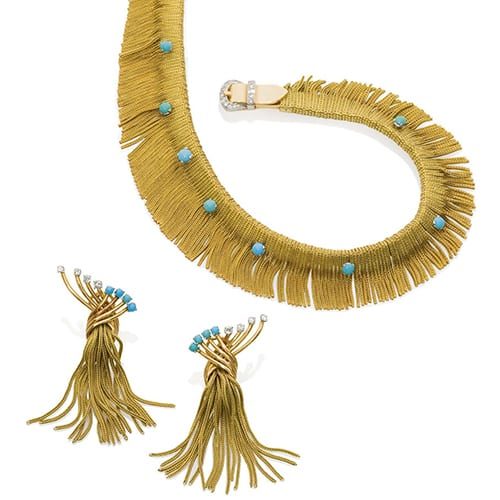
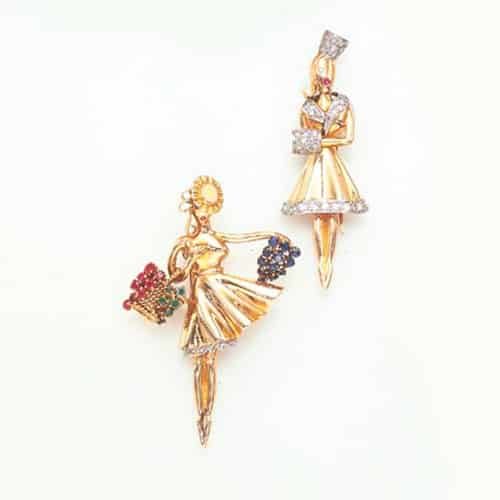
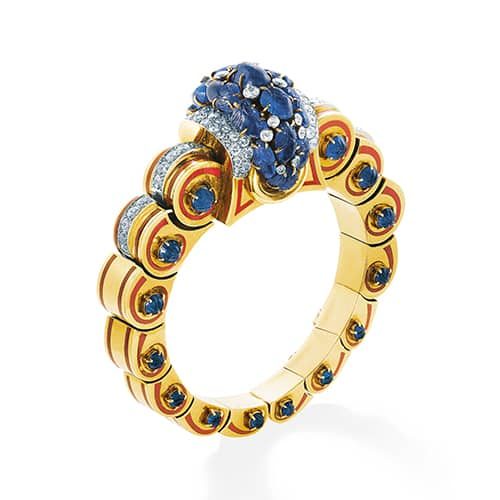
Workshops
In the early days of Lacloche Frères, it was the custom to employ independent craftsmen for both design work and the execution of the actual jewelry. Some firms did have in-house craftsman and/or designers but many did not. Having exclusive in-house laborers did not preclude firms from continuing to purchase from these workshops. Eventually, Fernand Lacloche designed and contracted “exclusive” jewels from these common workshops and the craftsmen delivered exquisite results. However, the best of these workshops were often still producing items for Lacloche and their competition with only minute changes in the design. Jewelers such as Boucheron, Van Cleef & Arpels, and Chaumet, to name a few, shared designs with Lacloche leaving us with the task of deciphering to whom the jewel belonged. Below are the maker’s marks for some of these craftsmen with links to further information regarding their companies.
Maker's Marks & Timeline
Lacloche Frères
| Country | |
|---|---|
| City | Madrid, Paris |
| Symbol | cartouche, frame, oval |
| Shape | cartouche, frame, oval |
| Era | e.1875 |
Specialties
- Art Deco Jewelry
- Retro Jewelry
1854
- Hendricks Lacloche is married and starts his family.
- All of his six surviving children end up in the jewelry trade.
1892
- Léopold and Jules Lacloche leave Brussels and found Lacloche Frères at 51 rue de Châteaudun, Paris.
- Jacques and Fernand Lacloche sail for New York.
1895
- Jacques and Fernand return from America and found Lacloche & Cie in Madrid.
- They sell jewelry designed and produced in Paris.
1896
- Lacloche & Cie has a shop in Biarritz and opens another in San Sebastian, Spain.
1897
- Walewyk-Lacloche opens in Madrid. They specialize in bridal baskets and hosiery. Bertha Lacloche (a younger sister) is the wife of Jacob Jacques Walewyk.
- Walewyk-Lacloche has shops in Biarritz and San Sebastian.
1898
- Leopold and Jules open Lacloche-Gompers with Louis Gompers at rue de l’Opéra in Paris later moving to Place Vendôme.
- Soon they have shops in Aix-les-Bains, Monaco, Nice, Trouville, and Ostend Belgium.
1900
- Jacques Lacloche, age 35, was killed in a train derailment leaving a pregnant wife and young child.
1901
- New Lacloche Frères store at rue de la Paix, Paris.
- Lacloche Freres-Gompers is dissolved.
1900
- Émilie Lacloche, married to Joseph Cohen (Coven), open Coven Lacloche on rue de la Paix, Paris.
- They win an honorary grand diploma at the Universal and Internation Exposition in Liège, 1905.
- Eventually, they open a store in Buenos Aires, Argentina.
1904
- Acquired Streeter & Co. on Bond St. in London along with the inventory including the Agra Diamond.
1905
- The Agra diamond is sold through Christie’s on February 22 to Max Meyer.
1907
- Walewyk-Lacloche in Madrid is outfitting the future heir of the Spanish crown.
- Lacloche Freres becomes Anciens établissments Lacloche Frères owned by Léopold, Jules, and Fernand wholesale and retail jewelers.
1914
- Lacloche Frères in Nice is closed.
1917
- Lacloche Frères buys Carl Fabergé’s inventory in London so Fabergé can repatriate their overseas capital. The London branch of Fabergé closes.
1919
- Jacques Jr. joins the firm in Paris.
- Eventually, he will run the London operation.
1921
- Death of Léopold Lacloche, age 58.
1922
- Henri and Jacques Lacloche, sons of Fernand, move to New York and open offices at 665 Fifth Ave.
1923
- Lacloche Frères opens in Deauville for the summer season. The store remains until the close of the 1920s.
1924
- Lacloche Frères opens in Cannes.
1925
- Lacloche Frères awarded a Grand Prix at the Exposition internationale des artes décoratifs et industriels modernes.
1929
- Lacloche Frères exhibits at the Arts de la bijouterie, joaillerie et orfèverie at the Musée Galliera, Paris.
1930
- Lacloche Frères is commissioned to create the Westminster Tiara which, among its 284 diamonds, includes the Arcot I and ArcotII diamonds.
1931
- The bankruptcy of the Société anonyme des anciens établissments Lacloche Frères announced in June.
- A la rue de la Paix (at the former address of Coven-Lacloche) is opened by one of the “Jacques”
1932
- Four businesses owned by Lacloche are sold under a court order including rue de la Paix, Cannes, Deauville, and Biarritz.
- The Stock held in England was sold to the Stone Richardson & Somerford Group.
- Death of Fernand Lacloche, March 22.
1933
- Nephew, Jacques Lacloche starts an eponymous business.
1934
- Lacloche Frères reappears in London, directors unknown.
- Jacques Lacloche provides goods to the firm for three years.
1936
- Jacques showcases his jewelry in Cannes.
1937
- Jacques Lacloche’s designs, exhibited in Paris at the Exposition internationale des arts et techniques, are noticed by the New York Times.
1938
- Jacques opens a salon at Place Vendôme and one in Cannes.
1939
- Jacques was noted along with other major French luxury firms in L’Illustration for his items at the New York World’s Fair.
1944
- Gestapo arrests Jacques Lacloche and imprisons him in a Montfleury villa. His release is secured by his friend Audrée Basax.
1945
- Jacques marries Audrée.
- They have a son named Francis.
1949
- Jacques Lacloche moved the Cannes location to Palais des Festivals.
1954
- Jacques becomes the first jeweler to create a perfume, No.1.
1956
- Jacques creates a clip brooch and earrings for the new Princess of Monaco, Grace Kelly.
1963
- Jean Dinh Van has a solo exhibition at Jacques Lacloche’s Place Vendôme location.
1965 & 1966
- Exhibitions of contemporary furnishings are held at the Place Vendôme location.
1967
- Jacques leaves the jewelry business to devote himself to “utilitarian creation” and the Place Vendôme
- Shop closes.
1968
- The Cannes location changes the name to Galerie J. Lacloche Édition. and exhibits jewelry by other artists.
1974
- Francis Lacloche works with his father on his art exhibitions until they close the Jacques Lacloche gallery in 1982.
1999
- Death of Jacques Lacloche.
Export Mark: Bell between L Fres in an Oval cartouche.
Sources
- Bennett, David & Daniela Mascetti. Understanding Jewelry. Suffolk, England: Antique Collectors’ Club, 1989.
- Mouillefarine, Laurence & Ristelhueber, Veronique. Lacloche Joailliers. Paris, France, Éditions Norma: L’École Des Arts Joailliers, 2019.
- Raulet, Sylvie, Jewelry of the 1940s & 1950s. New York: Rizzoli, 1988.
- Sydney Evening News. Saturday December 10, 1904, p.8.
Notes
- Mouillefarine et al, p.130.↵





